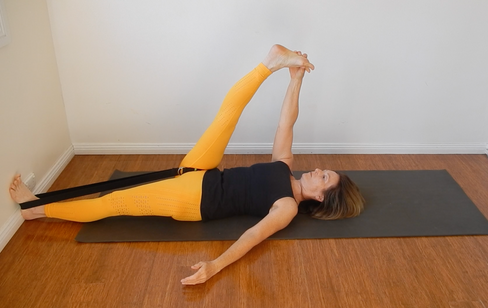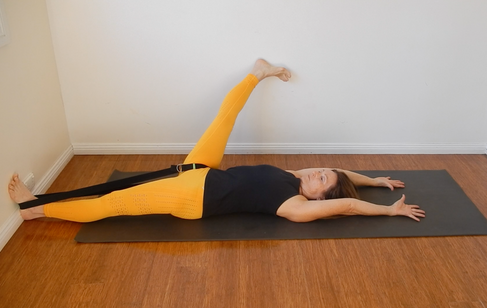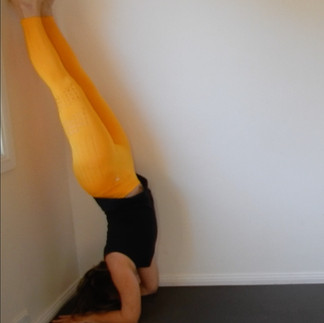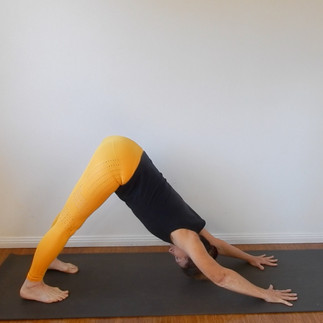
Today my practice is widely different from my earlier days of teaching. Certainly not as challenging and exhilarating when my focus then was on building up my repertoire, learning and mastering new poses. Today and 23 years later, 63 and a THA I enjoy a practice that is inward, restorative and quiet. I feed my mind and body with what they ask for. Earlier on when I was discovering, learning and mastering, a practice session was intensive and repetitive focusing on a few poses, today the aim is to maintain, restore and soothe - I do more poses with long holds.
I am disciplined, but certainly not regimented about my own practice, never been. I have a regular practice, but not at specific times and not daily. I bring myself to the mat when it feels right, with purpose and freedom, it is never a burden or an obligation.
I make sure that I have at least 2 hours of free time and that I will not be disturbed. One pose takes me most naturally to the next and time disappears!
Self-practice is a great compliment to studio classes for experienced students. A practice by yourself at home allows you to:
apply what has been learnt in class
move at your own pace and have more time to explore, evolve and deepen your practice, as well as more time to observe how different poses affect your breath and state of being
learn to listen and respond to your body’s needs
get in touch with the teacher within
Also useful when you cannot make it to your class or your busy schedule does not let you fit a regular studio practice.
Before you roll your mat out and step on it, have a purpose. What is your intention for this practice? Maybe you want to stretch your back, open your shoulders or your hips. Maybe you want to explore a particular category of poses, like backbends, twists or inversions. Or you just want to focus on couple of poses. What type of practice do you feel like on the day? A dynamic or a more restorative one? You may start with Sun Salutes or reclined on a bolster.
You don’t need to cook up a long intricate practice or try to replicate a studio class. Listen to your body and do a practice that serves you right.
Here’s a typical mid week, long self-practice - 90 minutes spent in poses. Each pose held between 1 to 10 minutes.
Note: to reduce the amount of photos, release poses and second side of the pose are not shown.
I usually start my practice with back stretches on my back bench. It opens up by back and front body as well as my shoulders. I can take the time to release my whole back and if, when in Supported Knee Bent Inverted Staff (pic 5) I then move into straight leg Inverted Staff (Viparita Dandasana), my hip flexors will get a lovely stretch!
It often feels right to incorporate into my practice some hip stretches and the Hand to Big Toe - foot to wall variation (Supta Padangusthasana 2) allows me to stay there for a while.
If I feel energetic and to keep my upper body strong I'll do some Handstands (Adho Mukha Vrksasana)
Well, it seems that on the day my body asked for some more backbends. I find that chair backbend prepares me well for Forearm Balance (Pincha Mayurasana) so it naturally came next.
This is my 10 minutes sequence for Headstand (Sirsasana), however if I do not feel up to it I will not practise the variations, I'll just do 5 minutes straight. A soft release in Supported Head To Knee Pose (Janu Sirsanasa) felt right on the day.
Like all other inversions the Shoulderstand (Salamba Sarvangasana) has many variations. Again if I do not practise some variations, I will hold the pose 5 minutes straight then move into Plough (Halasana).
Supported Restorative Bridge (Restorative Setu Bandha Sarvangasana) and Legs-up-the-wall (Viparita Karani). Today was a real treat at the end of my practice, but sometimes after a day on the land, pulling, shovelling, bending, cutting... that's all I do as a practice and I just stay 5 minutes in each pose then Savasana!

Aaaaaahhh Savasan - deep release, I always do it!
The belt around my thighs keeps my legs together, in place and quiet - just a great feeling for me.



















































































Comentarios